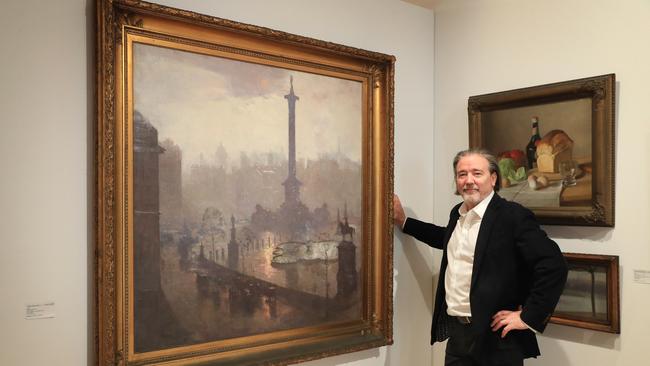Art market gets back in the frame: the alternative investment has defied the Covid pandemic
Online sales and a taste for local artists have triggered new investor interest in collecting artworks.

Art investors have just racked up the best year since 2017 after a late rush in the auction rooms meant the sector could hold its own against bumper returns from shares and property.
Joanna Strumpf of Sydney Gallery Sullivan and Strumpf suggests: “It didn’t start very well but as the year went on we realised that closed international borders meant that collectors started focusing hard on what the domestic market had to offer. In the end if was a good year – especially for Australian women painters.”
Most investors are already familiar with the vagaries of the art market where many pieces will never return profits, but 2021 was all the more remarkable because galleries were closed for months and total sales in the local market had been fading since 2017, when they reached $142m.
But with only days to go in 2021, total auction sales now look like reaching $120m – up from $108m last year.
What happened? At auction house Deutscher and Hackett, executive director Damian Hackett says: “We’re all trying to figure it out. Initially it looked like the sky might fall in, then we had a great turnaround.
“Of course one key element is that interest rates are so low and that means cash investments are doing nothing, people are actively investing and they are more willing to buy online now – that became hugely important,” he explains.
Deutscher and Hackett led the market with $32m in sales and also handled the knockout auction of the year – record $3.06m for an Arthur Streeton painting of the Grand Canal Venice.
In terms of highest prices this year, Streeton took out two of the top five: $3.1m for The Grand Canal (1908) and the Centre of the Empire (1902), which went for $1.5m. Brett Whiteley had the second highest seller – The Dove in the Mango Tree (1984) for $2m. Frederick McCubbin came in fourth with What the Little Girl Saw in the Bush (1904) at $1.5m and Jeffrey Smart fifth with The Arezzo Turn-Off (1973) at $1.4m.
Better still, the strong momentum in the market was not just for Streetons or other household names but also for the burgeoning middle market. All up 78 new artists’ records were achieved and almost a third of those records went to women artists.
Investors will also take confidence after some lesser known artists received prices that were dramatically higher than expected. The Art Sales Digest ‘‘star performers ratio’’ tables were led this year by a still life by Mikhail Larionov which was estimated at $1000 and sold for $61,000 – a return that might have only been rivalled in the more obscure corners of the cryptocurrency market.
Similarly, a Laura Jones ceramic plate, Lucio’s 2013, was offered on a $1000 estimate and went for $42,000, while a Nora Heysen 1937 nude had a $5000 estimate and went for $98,000.
The combination of a local focus among collectors and a continuing strategy among municipal collections to collect women painters combined to infuse some serious momentum into female painters that have been on the fringe and are now going mainstream. At the Smith and Singer gallery a Clarice Beckett’s The Boat Sheds was listed for $80,000 and sold for $270,000.
On the far end of the speculation spectrum there were some surprisingly high prices paid for prints, but they were from cult artist Banksy who is liable to surprise the market at any given time. A print that had been reportedly bought cheaply in a gift shop, Love is in the Air from a limited edition of 500, s sold for $150,000.
John Furphy of the Art Sales Digest says a key point for anyone considering investing in art is the commissions. You have to pay a commission of 20 to 25 per cent when buying a work of art and then 10 to 20 per cent when you are selling it – so you have to cover those costs first before you make anything on a painting.
Investors worldwide had not expected the market to spring back with such vigour in the latter half of the year as Covid lockdowns meant gallery closures and transport logistics played havoc with the standard season.
In March, the annual UBS mid-year review reported that a quarter of art galleries had been forced to lay off staff in the crisis while many art fairs had been suspended.
But the sector steadily improved from mid-year onwards. Looking ahead, we may even find the art market catching up with the exceptional results in the property markets, where prices moved up by more than 20 per cent this year and the sharemarket where total returns are heading towards 14 per cent.
The first big test of the art market next year will be the sale of the National Australia Bank art collection, which is to be handled by Deutscher and Hackett alongside Melbourne-based Leonard Joel. The bank is offloading more than 2000 works in the biggest sale of its type since Foster’s Brewing did something similar two decade ago. With works from John Brack, Albert Tucker and John Olsen, the sales will begin in February.




To join the conversation, please log in. Don't have an account? Register
Join the conversation, you are commenting as Logout